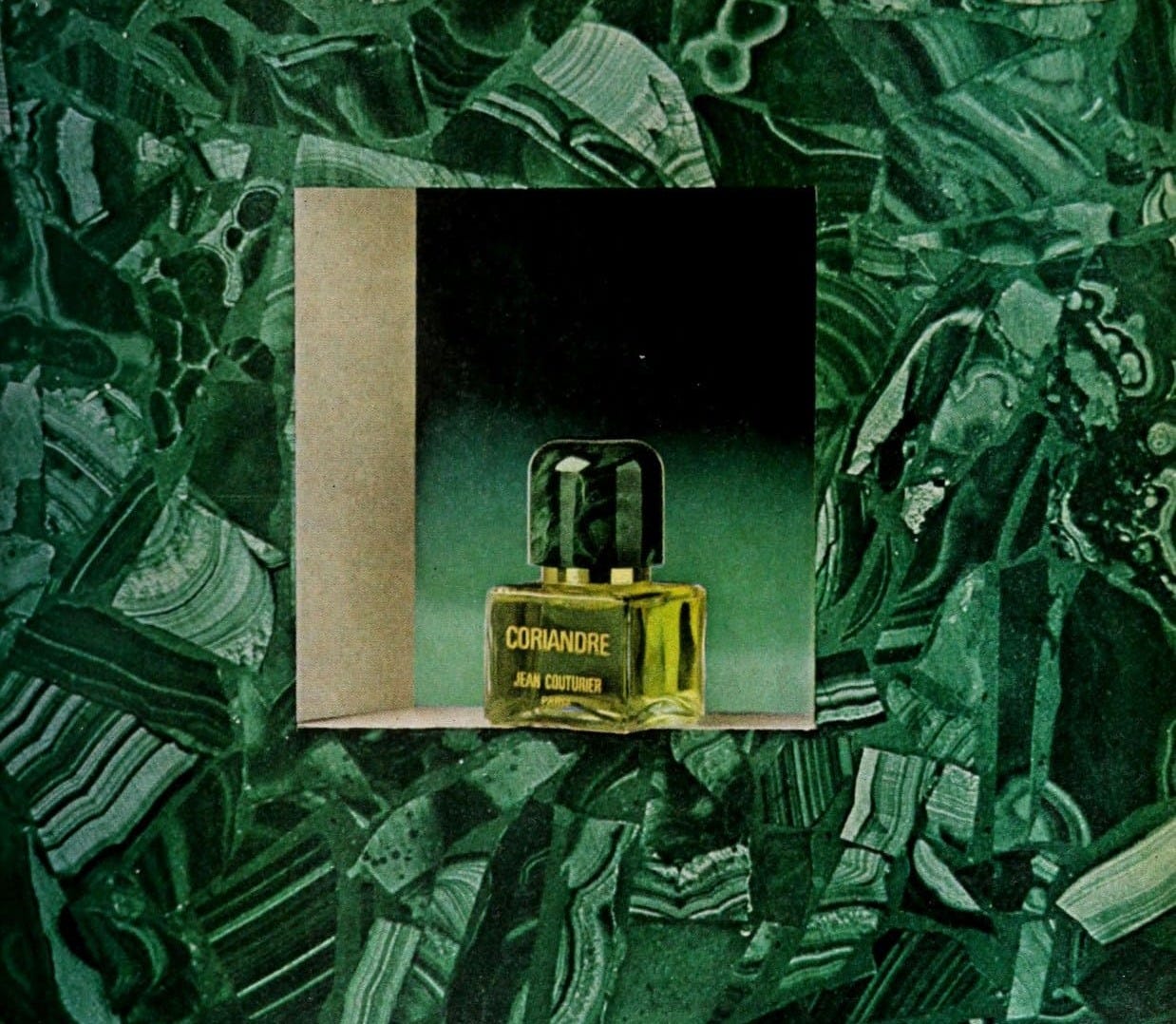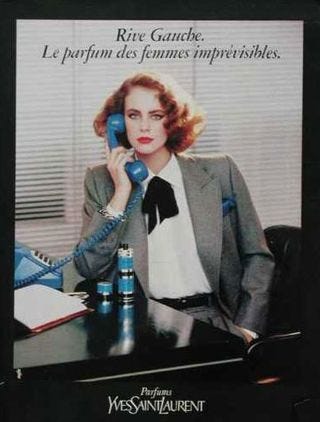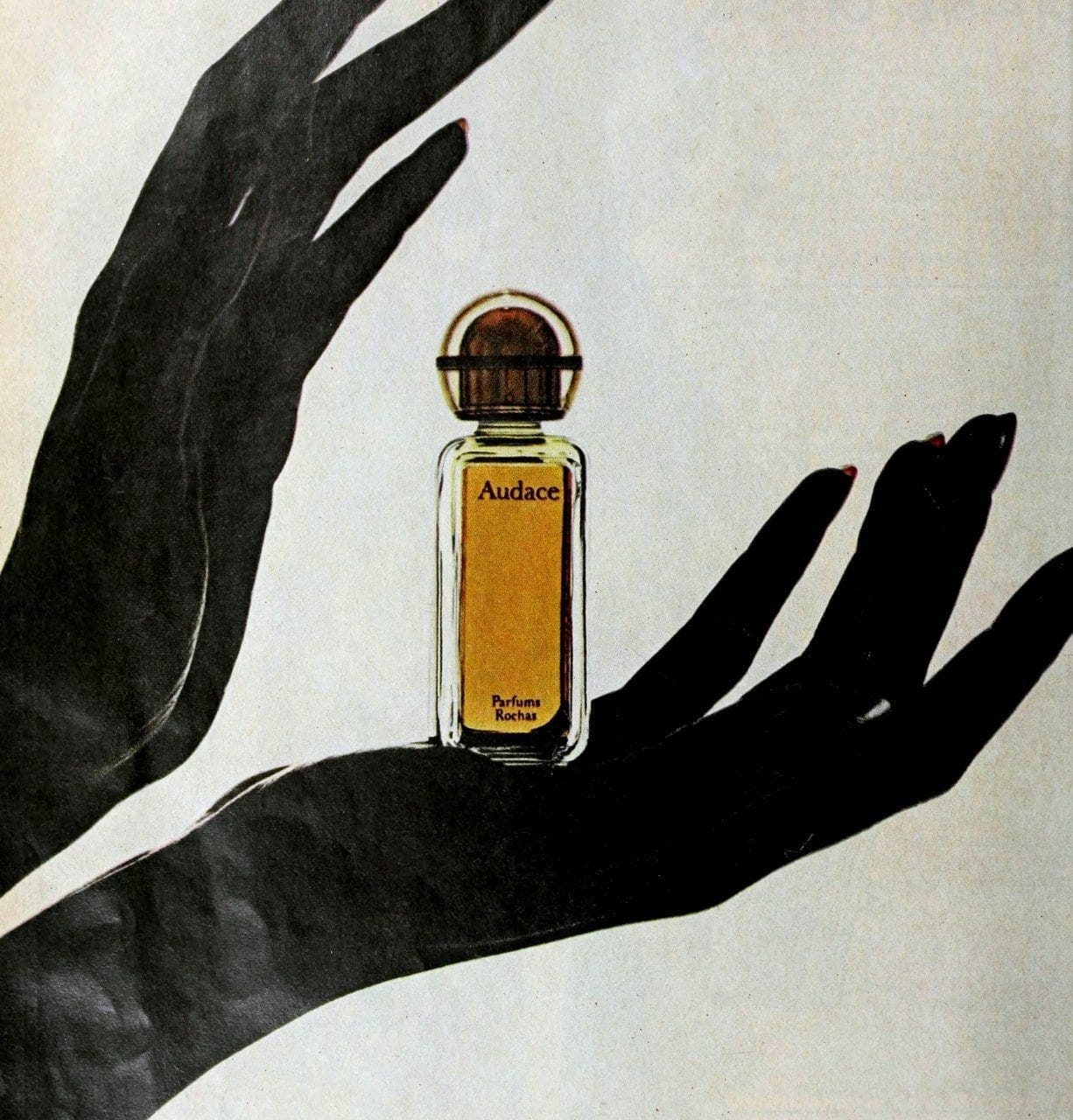Last week I found myself staring out of a window, my coffee going cold. It was a grey winter’s afternoon but I wasn’t there, really. I was on another planet daydreaming about ballroom dresses and black and white filters and wind blower machines and technicolor flowers.
I was thinking, as I often do, about perfume ads.
You remember them, right? Perfume ads? They used to play, sometimes, before YouTube videos and between television shows. They lasted about thirty seconds - though sometimes five minutes - and were so nonsensical and bizarre that they sometimes seemed like the chosen language of an extraterrestrial species trying desperately to communicate some terrible truth about the universe to us.
In perfume ads women have slicked back hair and wear ballgowns to run along the beach or ride a horse. In perfume ads men are always shot in black and white and walk through CGI deserts (because there are no real deserts on hand) while someone off screen shreds a guitar. Perhaps these two people will meet. They will not kiss but will stare strongly at one another while the camera spins around them and some kind of animal yowls in the distance.
Why are these people in these places doing these things? Don’t ask. Doesn’t matter. All that matters is that you will also feel like you’re sunbathing on a yacht if you buy this perfume = the perfume whose name is always whispered at the end of the ad in French accent, even if the name isn’t French, with a pair of disembodied hands raising the bottle like a sacrificial offering.
Aren’t you interested? Aren’t you excited? Don’t you want to sprout wings and fly across the Parisian rooftops into the waiting arms of an inoffensively handsome almost celebrity? Of course you do! Buy the perfume!
When perfume ads are good, they’re really good. When they’re bad…. well, given that most of them are bad, I can only conclude that brands always want their perfume ad to be the worst one possible because that’s the only way to get people talking about the product.
This bizarre visual language is a byproduct of the difficulty in trying to sell perfume. Years ago brands decided that saying ‘this is a pear and jasmine and musk perfume and we think you’ll like it’ didn’t really work. Perfume is not a product where you can say what it is and people will be interested - you have to sell how it feels. Perfume is evocative, performative - a projection of desire rather than a reflection of truth.
The perfume ad lives in the uncanny valley, that place just on the border of the fantastical where nothing is real so all things are possible. Why would you want to smell like someone who works in an office when you could smell like Charlize Theron doing an aerial silk performance in haute couture hanging from the roof of the Château de Versailles?
Don’t be ridiculous. Buy the perfume.
A perfume ad has to create a false image of the kind of person who would wear the perfume, an person who inspires admiration and envy. If consumers want to be that person then they’ll buy the perfume. When YSL famously advertised Rive Gauche as the first perfume for the ‘working woman’, they made sure you could tell exactly who you would be and who you would smell like by making that woman the centre of their advertising.
You are her and she is you. The perfume is the shibboleth. In the office answering phones and wearing pants and establishing your own line of credit - the Rive Gauche woman. Imprévisibles.
There’s a bizarre art to perfume advertising that fascinates me. I spend my time translating perfume into the written world so it’s sort of a parallel discipline - the translation of fragrance into the visual. The goal is different, but the method is the same: make people feel something about scent without ever having smelled it.
As insane and infuriating and confusing as they often are the perfume ad is still an intersectional language, a method of translating one art form into another - colours into taste. It’s an important part of the context and culture of fragrance that has morphed and reshaped with every new technology invented in the last century and a half.
There’s only one problem: the perfume ad is dying.
Of course there are still perfume ads. You couldn’t walk from one end of the shopping centre to another without encountering the monolithic vacant stare and sharp angles of Timothee Chalamet’s jaw superimposed above a bottle of Bleu de Chanel.
But that’s not how perfume is really advertised, not anymore. Like every other commodity the balance of power has shifted, because the consumer no longer trusts brands. They don’t want to be marketed: they want to be influenced.
The rise and rise of perfume influencers is a vast and fascinating topic. They exist on a broad spectrum, from lifestyle influencers to deep artisanal aficionados. Whatever your niche in the fragrance world there’s at least five influencers for you.
If you find an influencer whose tastes match yours, many people use this as a kind of pre-vetting tool for fragrance, like passing a reference check for a job interview. The currency of influencers is trust and the value they have for brands is incalculable, because influencers can tap into the only thing that matters on the internet anymore: authenticity.
And here we see the death knell of those weird and wonderful perfume ads of yore. There’s nothing I can think of that is less authentic than a thirty second ad with a woman who emerges slick as a dolphin from the ocean in a full beat to race a lion through a fallow field in Versace Medusa Aevitas. Any perfume ad worth watching has the same cadence as that weird dream you had after a night that featured one too many vodka cranberries.
This is not the realm of reality. The perfume ad is the realm of the bad acid trip.
One can only imagine how much brands are charging whichever A to D list celebrity they can convince to feature. Much cheaper to send fifty - hell, a hundred - influencers a free bottle and bank on them reviewing the scent to their organic following.
This model is clearly working. Fragrance influencers appear almost as quickly as new fragrance brands now. And there are so many ways that they are building a new perfume culture - more literate, more democratic, less cloistered and paranoid - that benefits everyone who loves fragrance.
Influencers are real people and they are opening their lives to you. The trust is the shibboleth now.
Through this vehicle - this community, this established currency of authenticity - brands have finally found a method of advertising perfume by simply describing how it smells and telling people that they will like it.
With the rise of influencers a new medium through which scent is translated to the visual is being born. The vlog. The GRWM video. The live unboxing. These are frameworks which comfort the viewer, set expectations, and allow a conversation about scent to begin.
The line between truth and advertising can sometimes blur. It’s always the top ten video that get me - ‘ten fragrances to wear for spring’. The caption will say #ad and sometimes I watch the whole video through trying to guess which one they’re hawking. It’s a trick of language sometimes, like the brand has given them certain words or phrases to work into the video. Sometimes if I see three videos in a row with the same perfume, that’s the giveaway. It’s the little things.
With every video I ask myself: is the trust still there?
So much of the internet these days seems to be filled with these questions, like digital landmines - step on the wrong one and the earth crumbles from underneath you.
Can I trust you?
Are you being honest?
Can you tell me the truth even if someone paid you to say it?
Can truth exist at all in the false reality of social media?
Is this real?
Is this real?
Is this real?
The old perfume ads weren’t like that. You didn’t realize it then but there was comfort in their largesse, their absurdity. Because you always knew they were trying to sell you something.
Because you always knew they weren’t real.
A few years ago I remember my Instagram feed being overtaken by post after post of footage from the same launch. It was a beautiful event, hosted at a polo field, in a huge white tent whose every wall was covered in flowers. The brand actually hosted a polo game; the influencers went out and stomped the divots; there were charcuterie boards and selfie walls and sample cards and perfume bottles scattered thoughtfully between origami napkins and frosted glasses of wine.
It looked like it intended to - it looked lovely. Almost too lovely, like something from a movie. Like something from an advertisement. Because the experience is the advertisement now, the launch event the structured world in which influencers bring their unstructured, authentic selves, resulting in a sort of ad that’s not an ad. Vlog. Reel. Day in the life. Content.
And I understood this language. I understood, like I used to with the old perfume ads, the kind of feeling this perfume was meant to evoke in me. So when the video kept going, I listened.
‘This is Oriana.’
A magenta pink bottle was held up. It gently tilted back and forth. Lights gleamed off the metal lid.
‘It’s a really beautiful raspberry and orange blossom perfume. It’s very elegant - very classy. It’s the new launch from Parfums de Marly.
And I think you’re really gonna like it.’ ▧








Talking of influencers, I religiously follow Persolaise on YouTube, a man so obviously in love with perfume that his enthusiasm is completely infectious. His top tens are fun, and range the gamut from old classics to new weirdos. Thoroughly enjoyable watching and discerning to boot!!
I took this as a sign to try the sample of Oriana that’s been lurking in my drawer